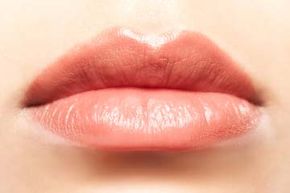Without lips we wouldn't be able to make the sound of the letter "P," we wouldn't be able to kiss the people we love, and we wouldn't be able to make those funny fish faces. Lips are unique -- they aren't like any other part of the human body. But although they look different from the rest of your skin, they're actually quite similar.
The outer layer of your skin is called the epidermis, and it has a protective covering called the stratum corneum. Underneath your epidermis is another layer of skin, the dermis. Like the rest of your skin, your lips have all three of these layers -- the difference is that the stratum corneum on your lips is far thinner than it is anywhere else on your body. Your lips also don't have any sebaceous glands -- these glands keep your skin moisturized, but your lips are on their own. Their only source of moisture is your saliva, and that's why they can easily become dry and chapped [source: Blistex].
Advertisement
The skin on your lips doesn't have any hair follicles either -- this is a characteristic it shares only with the palms of your hands and the soles of your feet. Whether you can see them or not, hair follicles cover every other area of your skin [source: Dowshen].
Another difference between your lips and the rest of your skin is that your lips don't have melanin, the pigment that makes you tan when you're exposed to the sun. Melanin is your body's natural way of protecting your skin from ultraviolet rays, and because your lips don't have any, they're at a higher risk of getting sunburned. Because your lips can't protect themselves from sun damage, it's important to use a lip balm that contains sunscreen -- your lips can develop sunspots and skin cancer just like the rest of your skin [source: Stevens].
Your lips' red or pink pigment comes from underlying blood vessels -- red-colored, blood-filled capillaries are close to the thin skin on your lips. The transition of the reddish-pink outline of your lips to the rest of the skin is called the vermillion border, and it's found only in humans [source: Ditkoff].
For more information on how your lips are different from other skin areas on your body, check out the links on the next page.
Advertisement


